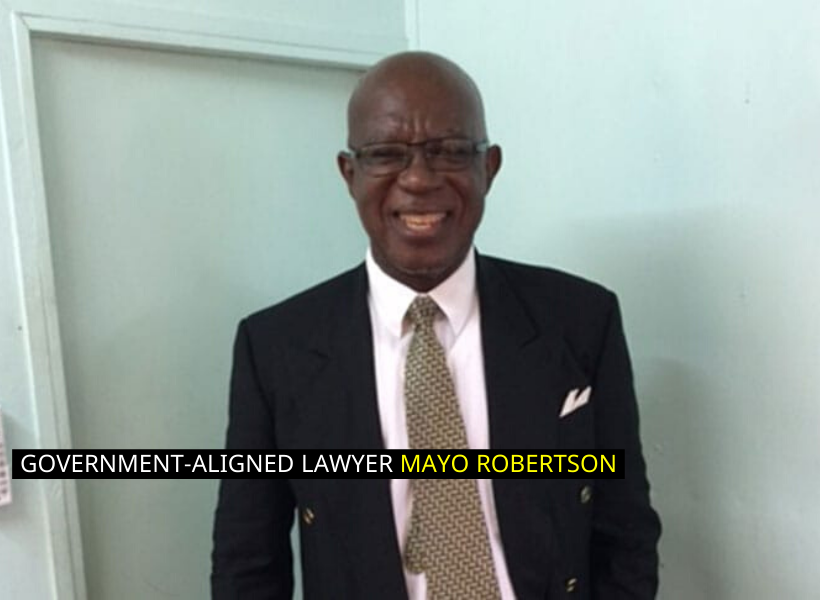Attorney-at-Law Mayo Robertson, who was among the battery of government-aligned lawyers that sought to block the recount of all votes cast in the March 02, 2020 General and Regional Elections, has asked the Court of Appeal for an interpretation of the words “more votes are cast” in Article 177 (2) (b) of the Constitution of Guyana.
Earlier this week, the Chairperson of the Guyana Elections Commission (GECOM), retired Judge, Claudette Singh directed Chief Elections Officer (CEO), Keith Lowenfield to prepare his report on the tabulated votes garnered from the National Recount pursuant to Article 177 (2) (b) of the Constitution and Section 96 of the Representation of the People Act.
That report is due today.
In Notice of Motion filed on behalf of one Eslyn David, who is seeking to restrain Lowenfield from complying with the direction of the Chairperson, Robertson, inter alia, has asked the Court of Appeal to grant an “Order that there be an interpretation of the words “more votes are cast” in Article 177 (2) (b) of the Constitution of Guyana.”
Article 177 of the Constitution speaks specifically to the Election of the President.
(1) of the Constitution reads- Any list of candidates for an election held pursuant to the provisions of Article 60 (2) shall designate not more than one of those candidates as a Presidential candidate. An elector voting at such an election in favour of a list shall be deemed to be also voting in favour of the Presidential candidate named in the list.
(2) further reads- there is only one Presidential candidate at the election; or
(b) reads- there are two or more Presidential candidate, if more votes are cast in favour of the list in which a person is designated as Presidential candidate than in favour of any other list, that Presidential candidate shall be deemed to be elected as President and shall be so declared by chairman of the Elections Commission acting only on accordance with the advice of the Chief Elections; after such advice has been tendered to the Elections Commission at a duly summoned meeting.
According to Section 96 of the Representation of the People Act, the Chief Election Officer shall calculate the total number of valid votes of electors which have been cast for each list of candidates and thereupon shall ascertain the result of the election in accordance with sections 97 and 98. 97.
- The total number of votes cast for all the lists of candidates shall be divided by fifty-three and the whole number resulting from that division shall be known as “the electoral quota”.
- The number of votes cast for any list shall be divided by the electoral quota; there shall be allocated to that list a number of seats equal to the whole number resulting from that division; and the number of votes represented by a fraction so resulting shall be known as “surplus votes” of the list; and if the number of votes cast in accordance with this Act for any list is less than the electoral quota, those votes shall accordingly be treated as surplus votes of that list.
- Any seat or seats remaining unallocated after seats have been allocated in accordance with subsection (2) shall be allocated as follows-
- one seat shall be allocated to the list with the largest number of surplus votes;
- if the number of seats so remaining is two or more, one seat shall be allocated to the list with the next largest number of surplus votes, and so on until all the seats so remaining have been allocated;
- for the purposes of this paragraph, where two or more lists have equal numbers of surplus votes, then lots shall be drawn by the Chairman of the Commission in the presence of the representatives of the lists affected to determine which list or lists shall be deemed to have more surplus votes than the other list or lists.
- For the purposes of the foregoing provisions of this section a combination of lists shall be treated as one list.
- The seats allocated to a combination of lists shall be allocated among the lists comprised in the combination in accordance with subsections (2) and (3), the electoral quota for that purpose being the whole number found by dividing the total number of votes cast for the combination of lists by the number of seats allocated to the combination













